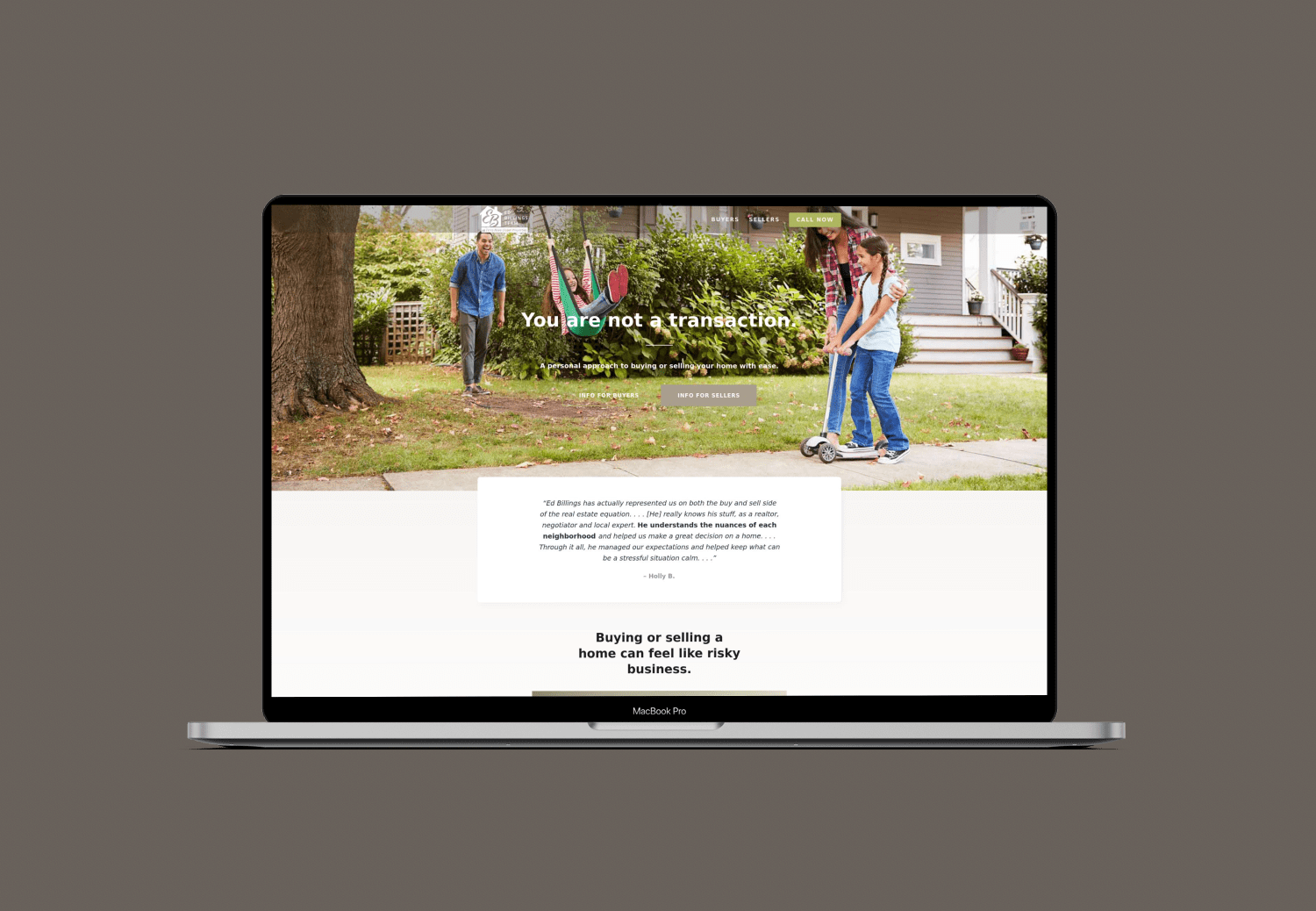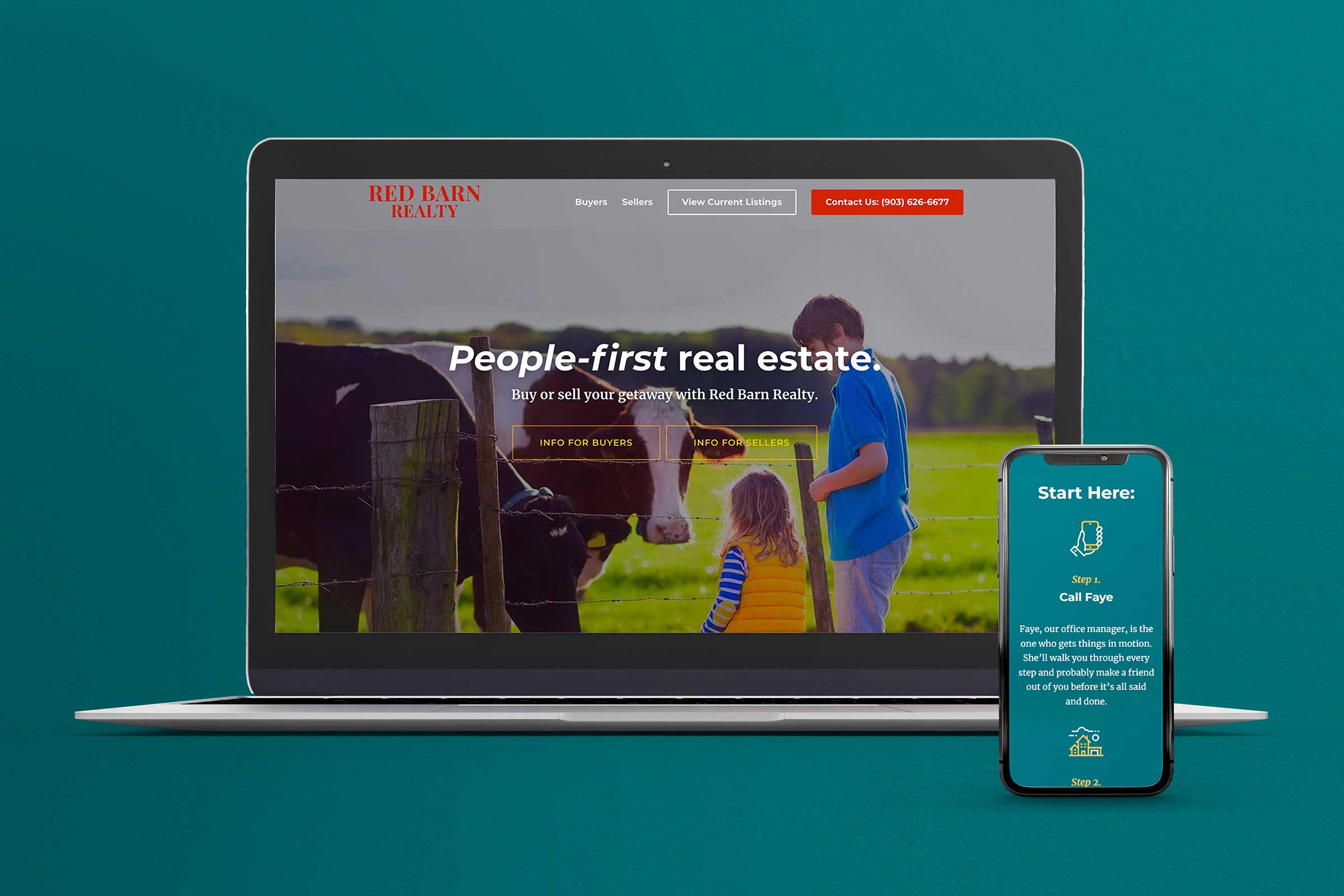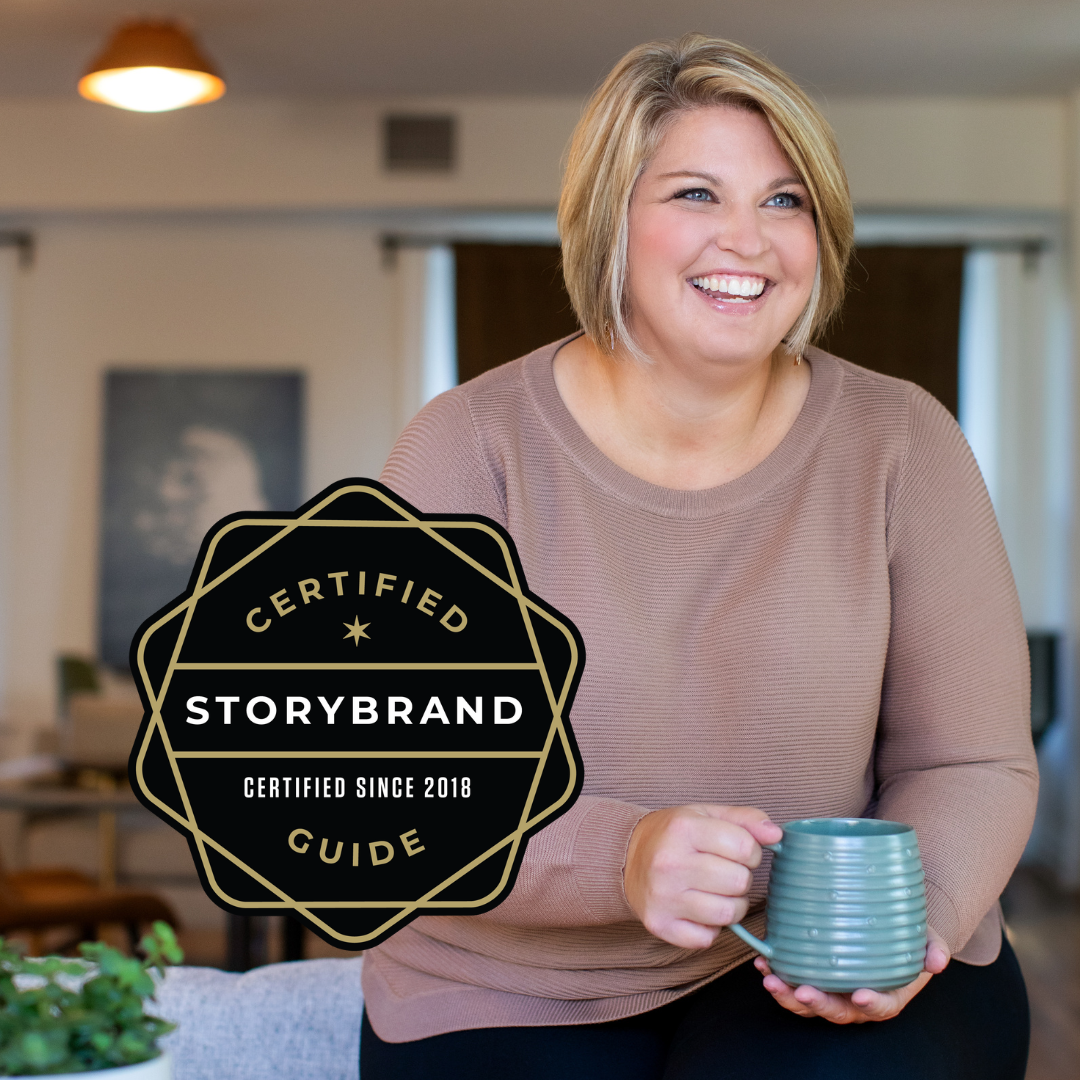If you’ve been reading “Building a Story Brand” by Donald Miller, you probably found a ton of inspiration for your own marketing. You learned the power of using messaging that isn’t confusing, wordy, and mentally taxing on your target audience.
They are in the process of buying, selling, or renting a new space — it’s a stressful process, and they need a partner that will help them make the right decisions without making things more stressful.
Most real estate agents and realtors focus on explaining how good they are, what their inventory is, and why they are different from other agents. But if you want to capture attention and build trust, you have to put their needs first. They want to know what you can do for them, not who you are.
That’s why I’m going to show you four crucial steps that you need to take if you want to clarify your messaging and close more customers.
4 Crucial Steps to Use StoryBrand for Your Real Estate Website
StoryBrand seems like a simple concept, but it can be much harder to execute than you probably realize. As a StoryBrand Certified Guide, I’ve helped other real estate agents like you successfully implement the framework into their websites and marketing materials.
I’ve learned firsthand what it takes to break through the competition and stand out in a very crowded space, and I’m going to share my secrets.
Step #1. Understand Your Competitive Advantage
Real estate is a very crowded market. You are competing with seasoned agents that have decades of experience and connections and a whole wave of young up-and-comers that already understand this whole “online marketing” thing.
So, how do you compete?
StoryBrand is a fitting framework to help you clarify your messaging, but you still need to find your advantage. In a sea of realtors, how do you stand out and convince prospective customers that they need to talk to you instead of a competitor?
Your competitive advantage is the thing that sets you apart — it makes you different. You could have:
- More experience in certain types of homes.
- More connections with other people that work in the real estate industry, like lenders and inspectors.
- Personal experience finding homes for larger families.
- Experience with certain types of commercial real estate.
- A passion for working with a specific kind of customer.
For example, you might have personal experience finding homes for larger families with multiple generations of family living together and need multiple masters or specific layouts.
Or you might specialize in helping small business owners rent their first commercial property and know what they should look for in their lease agreements.
Your “superpowers” or unconscious capabilities are the cornerstones of helping differentiate you on your website. They shine through in the messaging, layout, and even the graphical elements you choose to represent your customers.
When presented correctly, your ideal customers will visit your site, connect with you, and trust that you are the best fit for them. They will want to contact you and work with you because they feel confident that they’ll get results.
Step #2. Tell Your Customer’s Story
Your website should walk potential customers through a story of their possibilities. They will learn what it would be like if they work with you — and if they don’t. It will answer their questions, address objections, and get them excited about contacting you.
Each page has a purpose in the greater goal of convincing them to contact you.
- The home page gives them a quick overview of the benefits of working with you.
- The contact page will provide them with all the information they need to talk to you.
- You’ll want pages targeted directly to buyers and sellers individually if you work with both types of customers.
Some real estate agents want to integrate their website with IDX to display their listings directly on their website. We’ve found that this is generally unnecessary for most agents.
Today’s buyers have their choice of tools to use when shopping for homes or commercial properties. They will typically prefer to use their own tool instead of browsing on your website — so you can focus on helping them choose to work with you instead of trying to showcase properties on your site.
When it comes to planning out your site, each of your pages will contain some sections that have specific purposes.
Header/Hero
The Hero Section is designed to deliver the Ah-Ha moment to a visitor quickly. They need to understand what you do, how it benefits them, and how to get it within just a few seconds.
Value Proposition
The Value Section explains your value — what they’ll experience when they choose to work with you. You’ll focus on the top three to four benefits.
Products / Pricing Section
The Products/ Pricing Section that’s used to direct them to the site area contains the information most relevant to the reader — such as the buyer and seller pages.
The Objection-Handling Section
The Objection-Handling Section is where you address anything that might be holding them back from contacting you. You can do this with testimonials, FAQs, or even a simple explanatory paragraph.
Stakes
The Stakes Section explains what can happen if they don’t work with you. You’re talking about their problems, how they feel about those, and why they shouldn’t have to feel that way.
The Guide
The Guide Section is where you introduce yourself as the guide in their story. You’re the one that understands what they’re going through and has the expertise to help them.
The Plan
The Plan Section is all about making it easy for them to decide to contact you. You give them a simple three steps that they will take to hire you.
Step #3. Get Inspired
We’ve built websites for real estate agents using the StoryBrand framework. Let me walk you through a couple of my favorites to show you what’s possible and give you some inspiration for your site.
Ed Billings Team at Terry Nova Global Properties
When you visit their page, you are immediately greeted with a simple “You are not a transaction — a personal approach to buying or selling your home with ease.”
This is the hero section at work. Remember, it’s supposed to address who you help, how they benefit from your help, and then how they get your help. In this hero, you can see:
- Who: someone buying or selling their home.
- Benefit: they give you a personalized approach to make it easier to buy or sell.
- How: You can “call now” using the green button at the top or head over to their pages specifically for buyers and sellers.
- Even the photo in the background is strategically chosen to show prospective customers what their life could look like if they hire Ed Billings Team.
As you scroll further down the page, you’re pulled into the story.
- A guide section that deftly uses empathy, authority, and a belief for the reader to build confidence. “… I’m Ed Billings, a licensed Realtor®. As your real estate guide, I believe you ought to be able to purchase or sell your home with confidence… We’ll handle the hard stuff so you can focus on your future.”
- A product/pricing section that draws the reader to the website areas that are designed specifically for them. “Buy your ideal home… Sell your home with ease…”
- Objection handling is sprinkled around the page in the form of client testimonials from real people that have worked with Ed Billings and his team to buy or sell homes.
- The plan section introduces a simple 3-step pathway to getting the help they need. “Step 1. Make a call… Step 2. Plan for success… Step 3. Get lifelong support.”
You can easily see as you browse the site how powerful the story is.
Red Barn Realty
The website of Red Barn Realty lets you focus on what matters- family. The slogan “people first” is the first thing you see, which helps you see yourself as part of the future Red Barn Realty is offering to you.
This website allows you to present yourself as a hero. This website shows visually how you’ll help make this image a reality when buying a new piece of property.
- Who: Self-explanatory buttons directing buyers and sellers to information
- Benefit: The website refers to the browser as a “friend,” helping to make the browser feel a connection
- How: A clearly labeled bright red “contact us” button continuously at the top of the screen
- Not only does the image invoke a feeling of family, but it helps connect the reader mentally to the brand name with imagery of farm animals.
The more you browse, the more story is told:
- A Buyer’s Section: This helps promote the local community and emphasize how they’ll “show you around.”
- A Seller’s Section: This section helps frame selling as a return on investment and reassures potential sellers about their marketplace knowledge
- Testimonials: These help the browser see multiple real people who have successfully interacted with the brand, helping them build trust.
- Step-by-step: This section tells the browser exactly what steps they need to take and puts a name to it- the first step is to call Faye, their office manager. Placing a name to the number helps the browser see Red Barn Realty as a genuine company that values personhood.
Step #4. Work with a Certified Guide
I know that following all of these steps can feel daunting if you haven’t done it before. StoryBrand is a powerful framework, but it’s also complex to get started with.
I always recommend talking with a StoryBrand Certified Guide before beginning any significant changes to your messaging and website. It’s a big undertaking, and you want to work with someone that knows how to do it right.
At Agency Boon, we believe in the power of story to help grow your real estate business. Our team of StoryBrand certified guides can help turn your lackluster website into the perfect storytelling device to help you get more clients for your real estate business.
Contact us today and let us help you get your website off the ground and successfully turn browsers into buyers.







